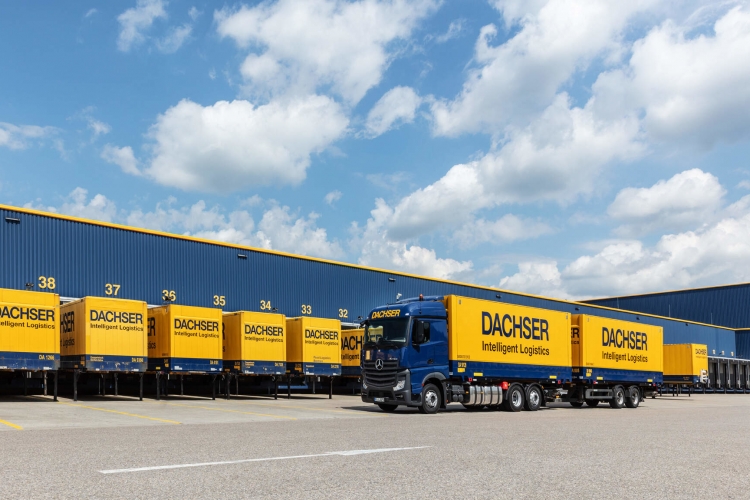Responding to Global Logistics Challenges
- Oprac. M.K.
- Kategoria: English zone
Amid growing pressure on global supply chains and economic instability, the implementation of flexible and integrated logistics solutions has become crucial. Conflicts, geopolitical tensions, and customs barriers have exposed the fragility of international goods flows. A successful example of addressing these challenges is the collaboration between Lenze, a specialist in industrial automation, and global logistics operator DACHSER.
Lenze SE is a global company offering mechatronic products, automation systems, software, as well as cloud and IoT solutions. As Gregor Wiesinger, Sales Manager Area West Austria at DACHSER Air & Sea Logistics, explains, advanced logistics plays a key role because Lenze must source components from around the world and deliver finished products to global markets.
Flexible Logistics as a Game Changer
The company places particular emphasis on the efficiency and transparency of logistics processes.
In practice, this means that delivery routes must be as short, easily planned, and trackable in real time as possible. Components must arrive punctually to limit the need for stockpiling, and finished machines and systems must reach customers on time - says Markus Gerhart, Sales Executive, European Logistics DACHSER Austria.
That is why Lenze relies on flexible solutions and trusted partners. DACHSER offers Lenze comprehensive door-to-door transport solutions, combining less-than-container load (LCL) ocean shipping with efficient road transport across Europe. LCL shipments allow for more frequent dispatches without waiting for full container loads. Thanks to LCL, our global supply chain remains flexible and predictable - emphasizes Wiesinger. Regular connections between Asia and Europe ensure consistency, reduce costs and carbon footprint, and limit the need for holding large inventories.
Integration of Different Modes of Transport
To understand the effectiveness of the collaboration between Lenze and DACHSER, it is worth looking at the logistics process itself. Automation system components are shipped from China to Lenze’s plant in Asten, Austria. They are first sent to Shanghai and Ningbo, where they are labeled, then transported by sea to Europe. After unloading at the port, the containers are moved directly onto freight trains bound for Austria, bypassing traffic jams and bottlenecks at the ports. In Hörsching, the goods arrive at DACHSER’s logistics center and from there are delivered to the production facility in Asten. Finished products are subsequently shipped to customers in Western and Central Europe. DACHSER Road Logistics handles between 20,000 and 24,000 shipments per year from Lenze’s Austrian facility - says Gerhart. Wiesinger highlights that a major advantage of the partnership is that once the shipments are loaded in Asia, they remain within DACHSER’s network until final delivery, including customs clearance, ensuring complete transparency.
Transparency at Every Stage
The foundation of success is the digital integration of the IT systems of both companies. All data, orders, and shipment statuses are exchanged electronically, enabling real-time shipment tracking and quick responses to potential delays.
Transparency in the supply chain is our priority. Thanks to smart shipment management, we have full control over the flow of materials - says Zijad Besic, Supply Chain Manager at Lenze.
Resilience in Times of Crisis
In times of global crises, rising freight costs, and container shortages, the logistics model combining LCL sea transport, rail, and road transport has enabled Lenze to maintain the continuity of its supplies. In urgent cases, critical components were delivered by air freight.
Our cooperation with DACHSER is based on direct, partnership-based contact that goes beyond standard video conferences. This is the only way to build trust and ensure efficient logistics processes. Close collaboration allows us to maintain a strong focus on quality and the achievement of shared development goals - concludes Besic.
Source: DACHSER


